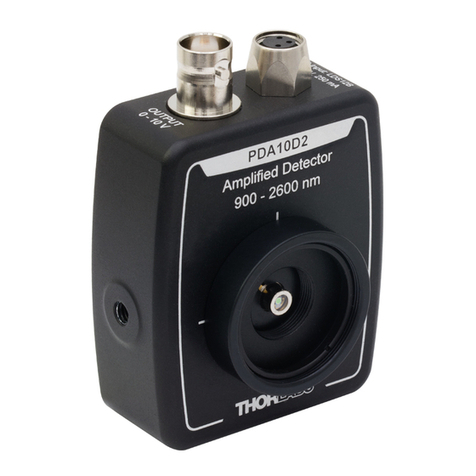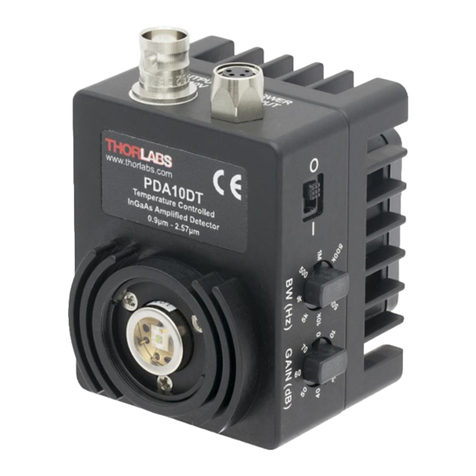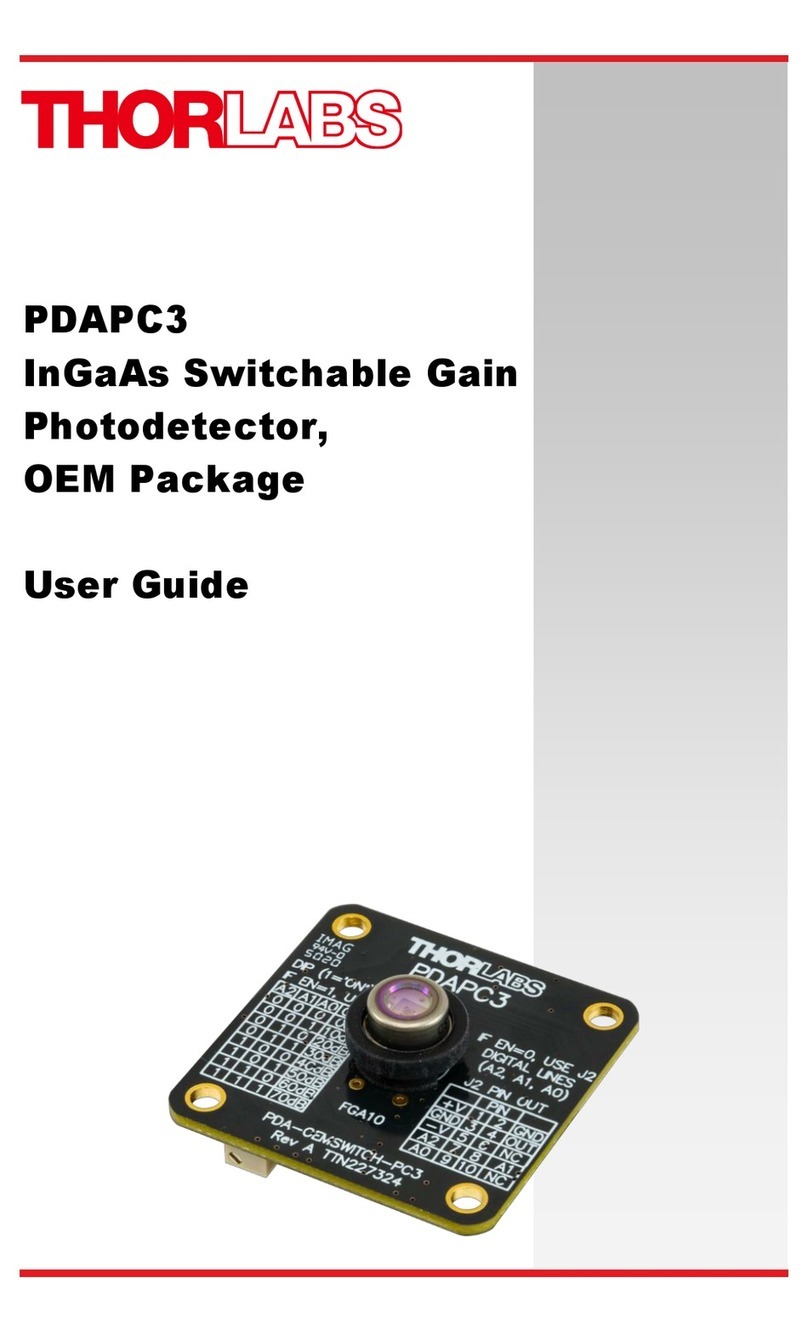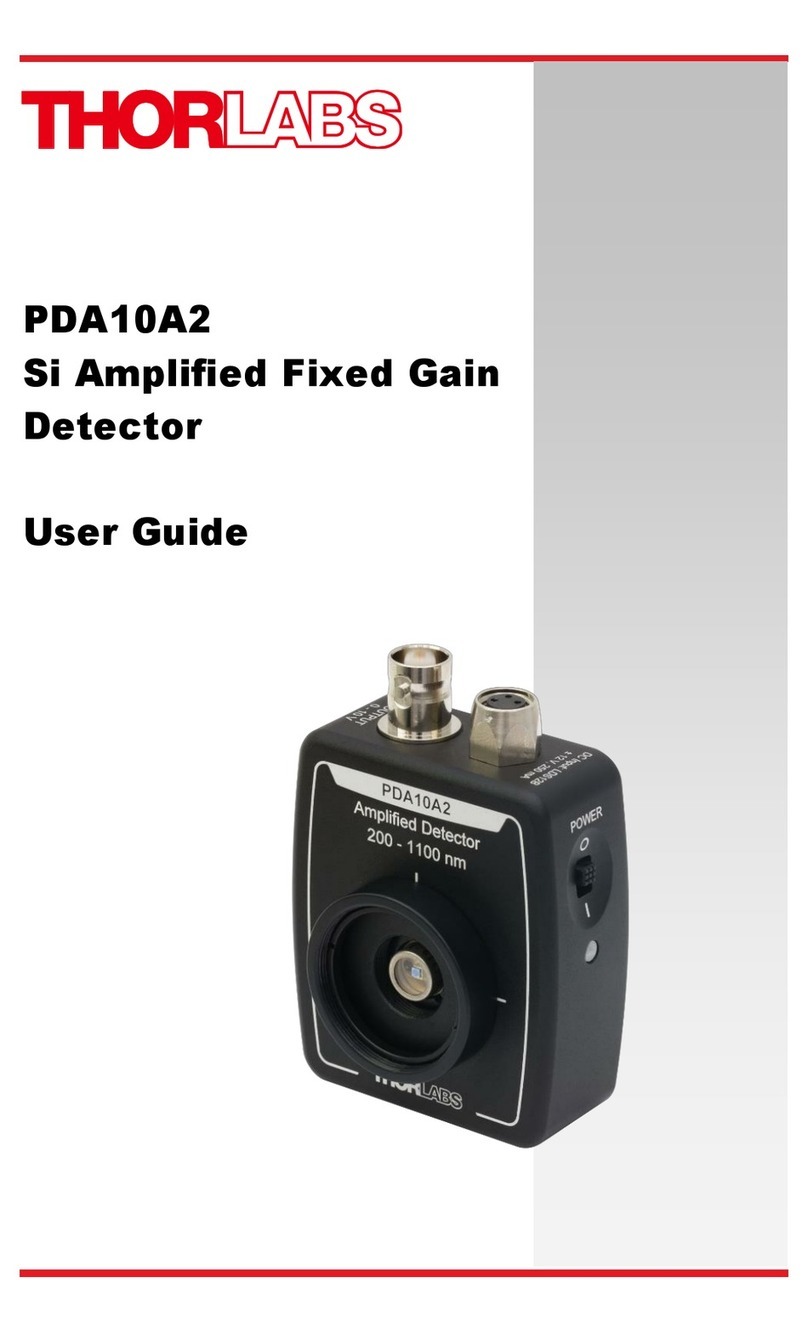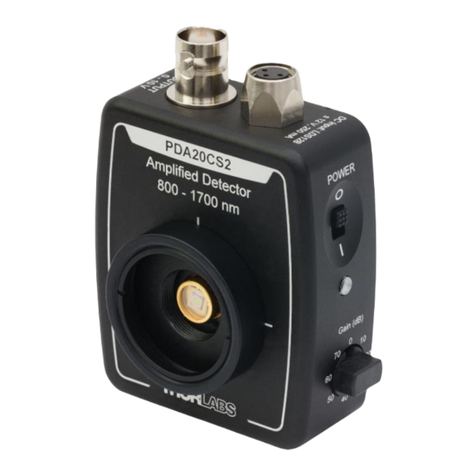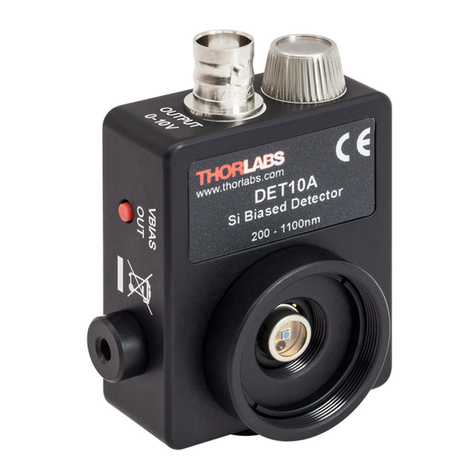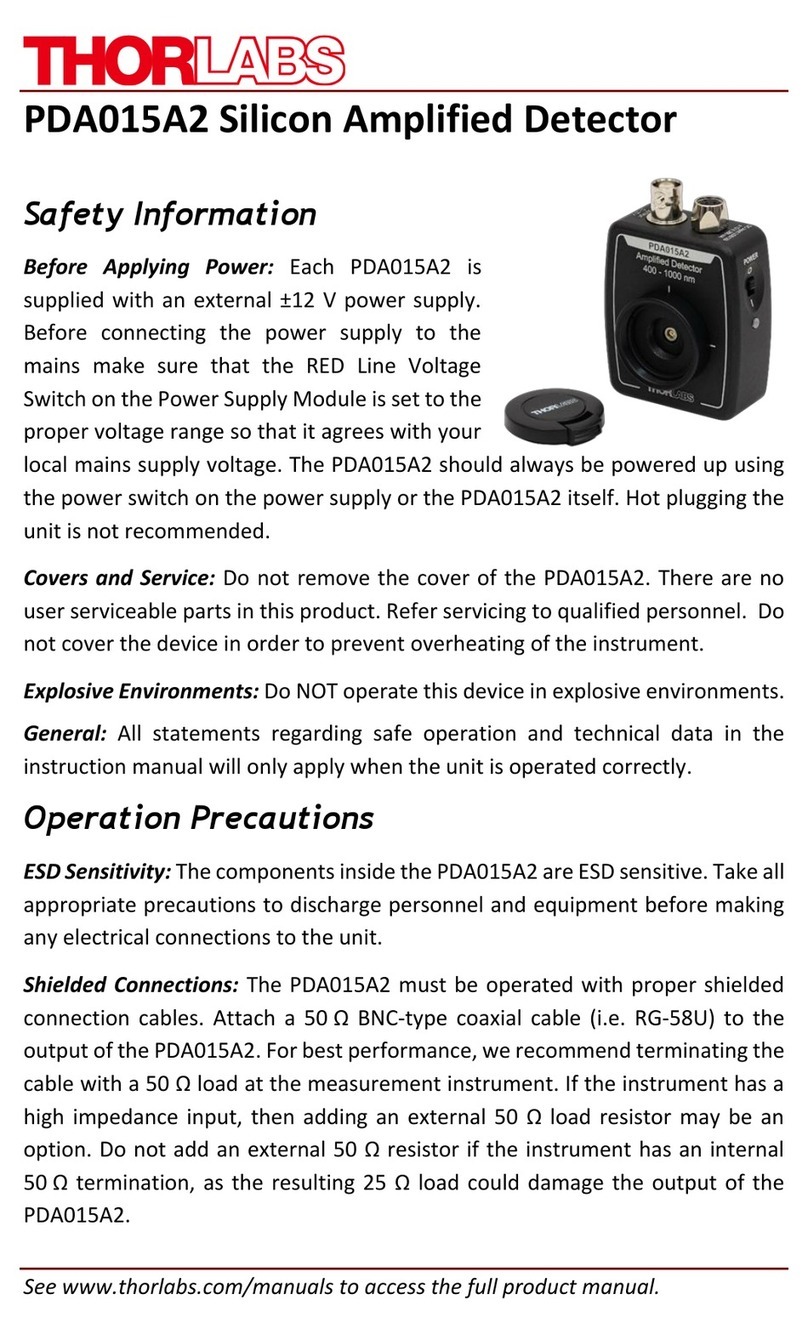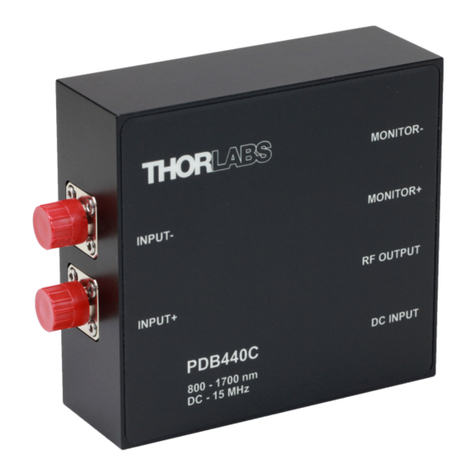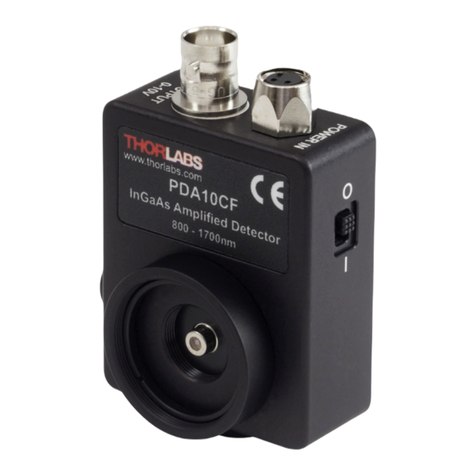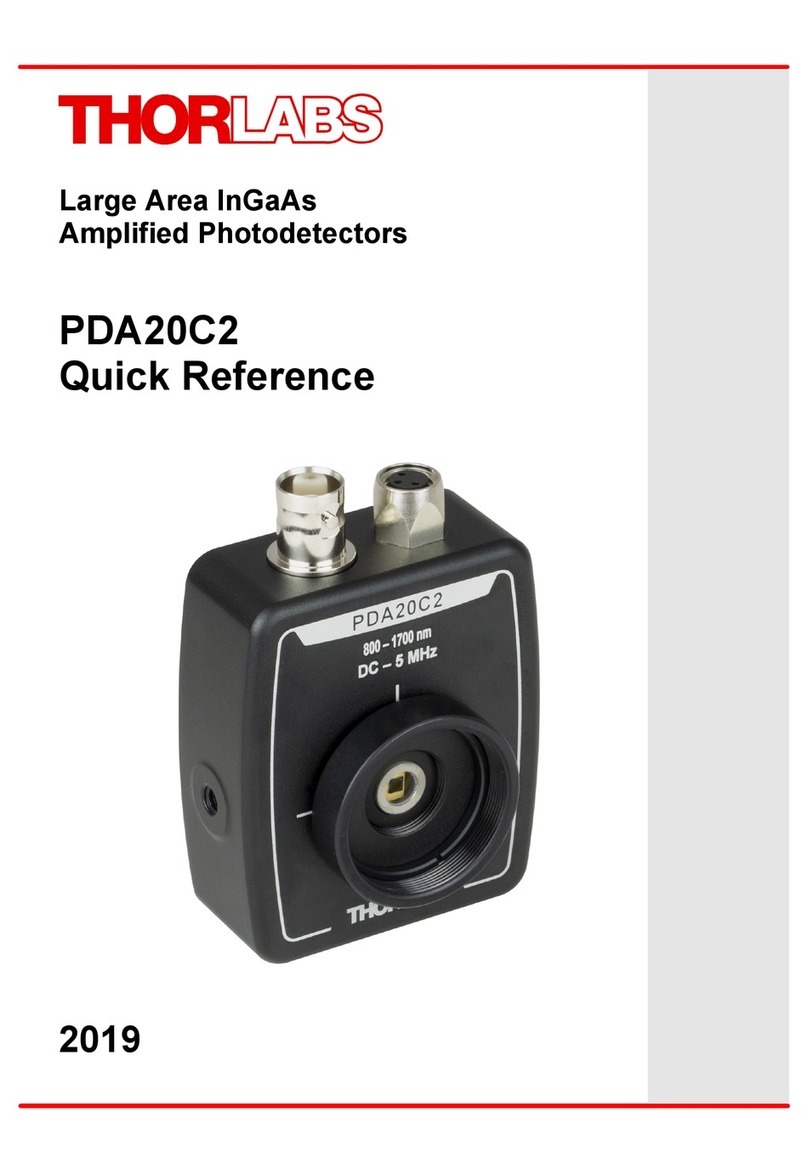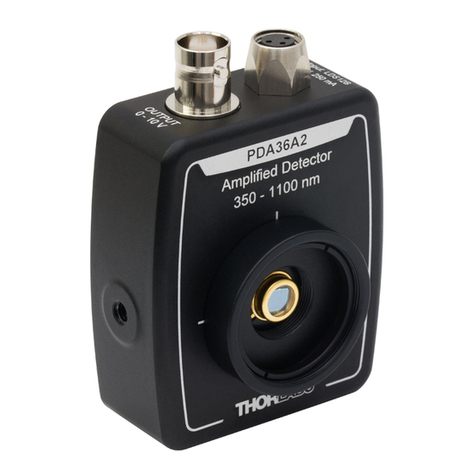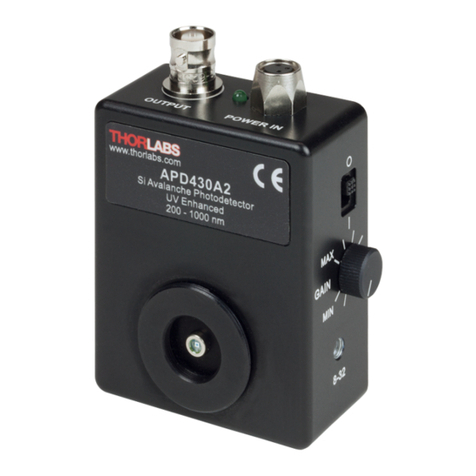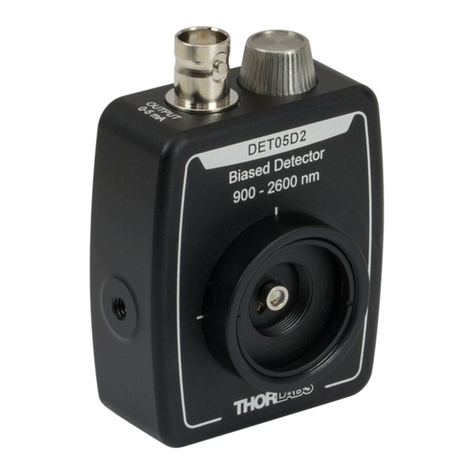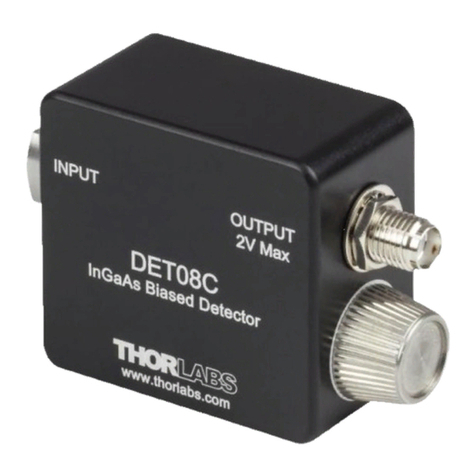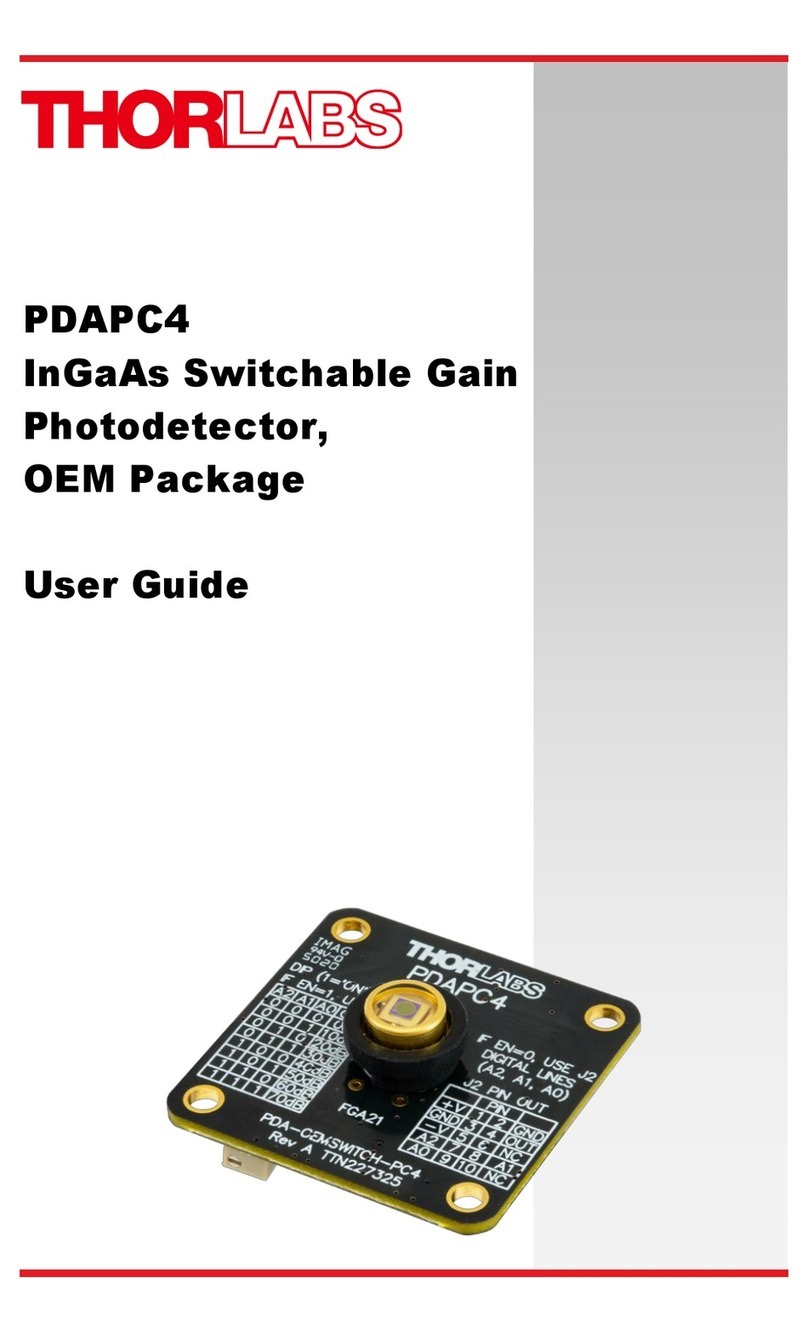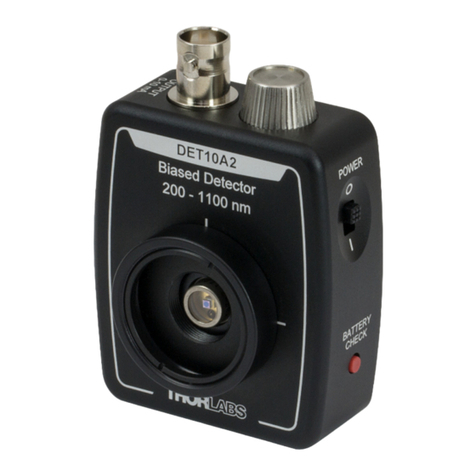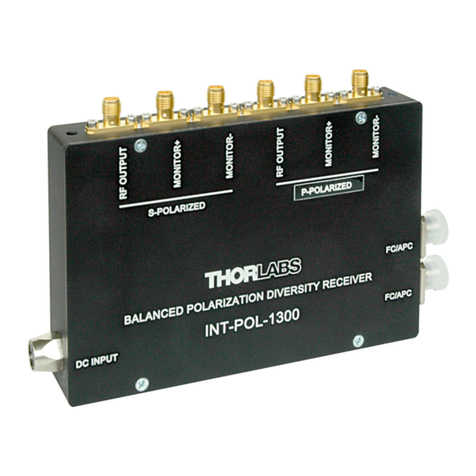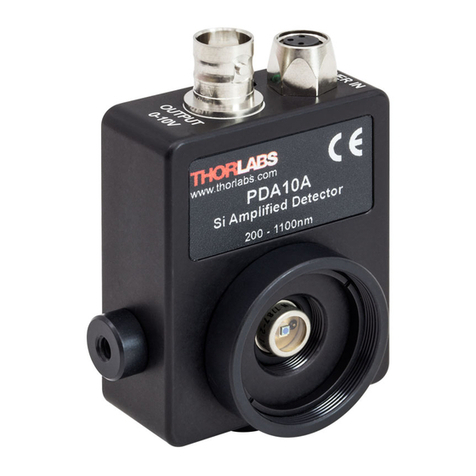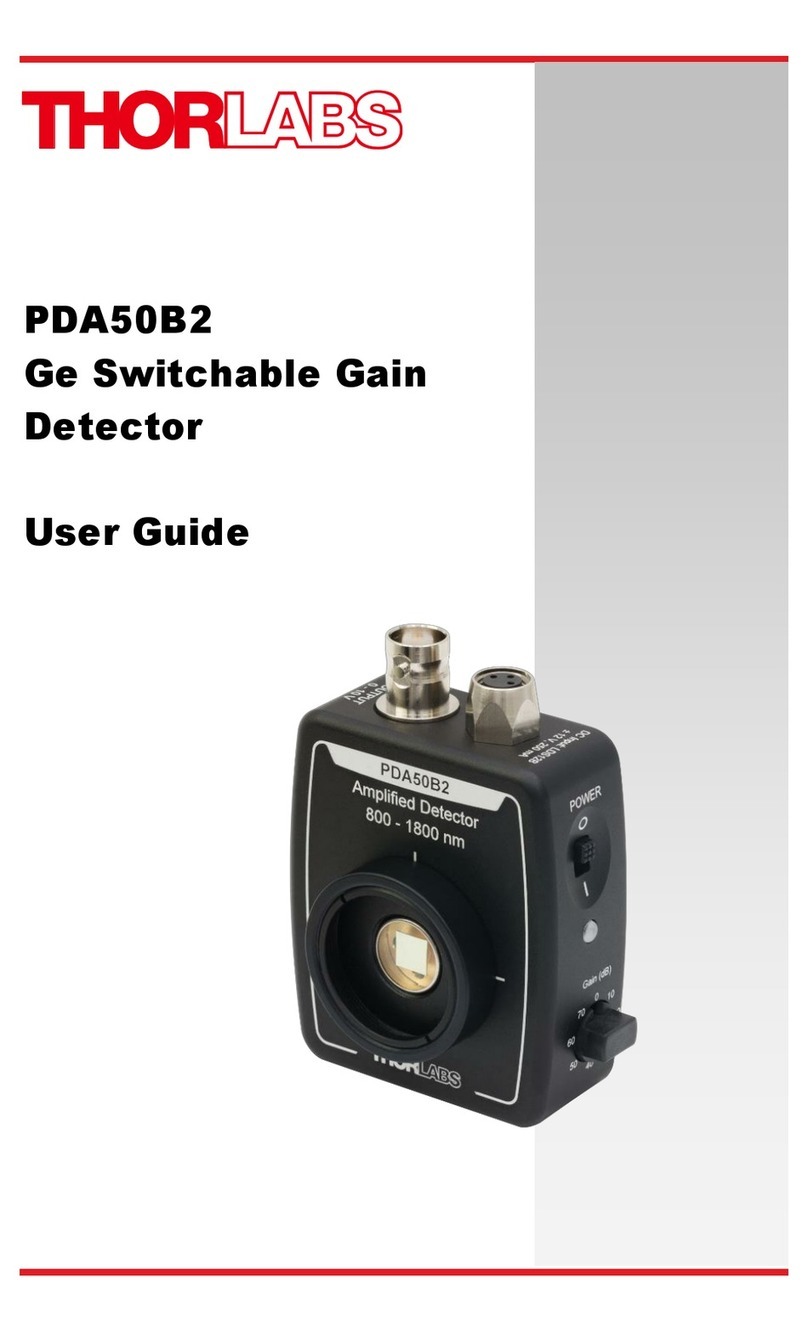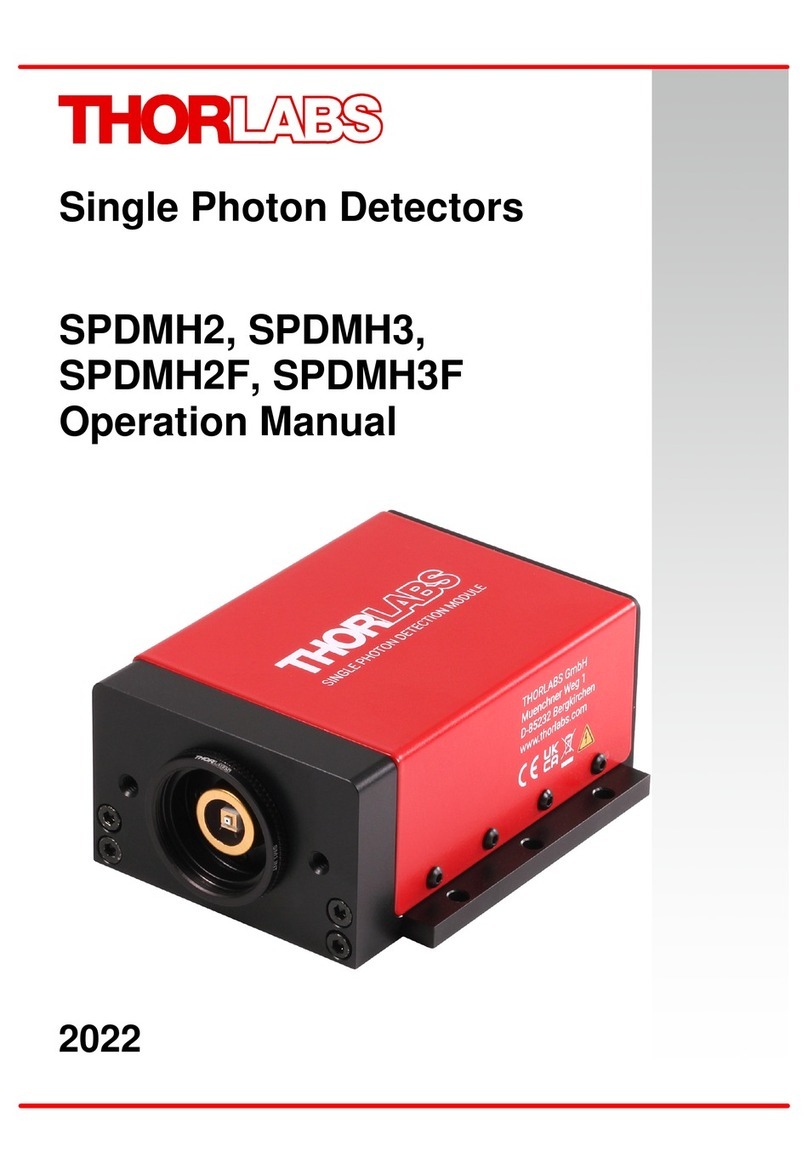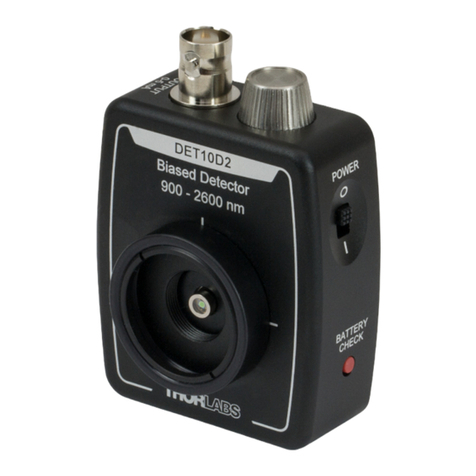
2922-D02 Rev C 8/2/00
Page 1of 3
PO Box 366, 435 Route 206N, Newton, NJ 07860
Ph (973) 579-7227, Fax (973) 383-8406, http://www.thorlabs.com
Operating Manual PDA500 - Switchable Gain, Amplified GaAsP Detector
Description:
The PDA500 is an amplified, switchable-gain, GaAsP detector designed for detection of light signals from DC to 200
kHz. A five-position rotary switch allows the user to vary the gain in 10 dB steps. A buffered output drives a 50Ωload
impedance up to 5 volt. The PDA500 housing includes a removable threaded coupler that is compatible with any
number of Thorlabs 1” threaded accessories. This allows convenient mounting of external optics, light filters
apertures, as well as providing an easy mounting mechanism using the Thorlabs cage assembly accessories.
The PDA500 has an 8-32 tapped mounting hole with a 0.25” mounting depth and includes a 120VAC power AC/DC
supply. The PDA500-EC has a M4 tapped mounting hole and includes A 230VAC AC/DC power supply.
Specifications:
Note 1: The PDA500 has a 50Ωseries terminator resistor (i.e. in series with amplifier output). This forms a voltage
divider with any load impedance (e.g. 50Ωload divides signal in half).
Setup
•Unpack the optical head, install a Thorlabs TR-series ½” diameter post into the 8-32 (M4 on -EC version) tapped
hole on the bottom of the head, and mount into a PH-series post holder. Note: Do not install a mounting post
more than ¼” into the housing. This will damage the unit.
•Plug the 5-pin DIN plug on the power supply provided with the PDA500 into the mating jack on the PDA500.
•Plug the power supply into an 50-60Hz, 100-120VAC outlet (220-240VAC for -EC version).
Detector Performance min typical max
Detector GaAsP 0 dB Setting
Active Area 1.3 x 1.3 mm Transimpedance Gain11.5 x 104V/A
Response 300 to 680 nm Trans. Gain (50Ω)10.75 x 104V/A
Peak Response 0.3 A/W @ 640 nm Bandwidth 150 kHz
Bandwidth DC to 150kHz Noise (RMS) < 100 µ
µµ
µV
NEP (640nm, 0dB) 60 x 10-12 W/√
√√
√Hz Offset -5 mV 4.5 mV 15 mV
NEP (640nm, 10dB) 20 x 10-12 W/√
√√
√Hz 10 dB Setting
NEP (640nm, 20dB) 9 x 10-12 W/√
√√
√Hz Transimpedance Gain14.7 x 104V/A
NEP (640nm, 30dB) 6 x 10-12 W/√
√√
√Hz Trans. Gain (50Ω)12.35 x 104V/A
NEP (640nm, 40dB) 4 x 10-12 W/√
√√
√Hz Bandwidth 150 kHz
Output Voltage(50Ω)10 to 5V Noise (RMS) 130 µ
µµ
µV
Output voltage1. 0 to 10V Offset -5 mV 5 mV 15 mV
Output Impedance150 ohms 20 dB Setting
Load Impedance1. Hi -Z to 50 ohms Transimpedance Gain11.5 x 105V/A
Gain Steps 0, 10, 20, 30, 40 dB Trans. Gain(50Ω)10.75 x 105V/A
Gain Switch 5-Pos Rotary Bandwidth 150 kHz
On / Off Switch Toggle Noise (RMS) 170 µ
µµ
µV
Output BNC Offset -10 mV 6.5 mV 20 mV
Damage Threshold 100mW CW 30 dB Setting
0.5J/cm210ns PW Transimpedance Gain14.7 x 105V/A
Optical Head Size φ
φφ
φ1.5” x 0.79” Trans. Gain (50Ω)12.35 x 105V/A
Weight 60 grams Bandwidth 100kHz
Accessories SM1T1 Coupler Noise (RMS) 250 µ
µµ
µV
Storage Temp -20 to 80°
°°
°COffset -20 mV 11 mV 50 mV
Operating Temp -10 to 60°
°°
°C40 dB Setting
AC Power Supply AC - DC Converter Transimpedance Gain11.5 x 106V/A
Input Power 100-120VAC, Trans. Gain(50Ω)10.75 x 106V/A
(220-240VAC-EC Bandwidth 45kHz
version) Noise (RMS) 400 µ
µµ
µV
50-60Hz, 5W Offset -100 mV 25 mV 100 mV
